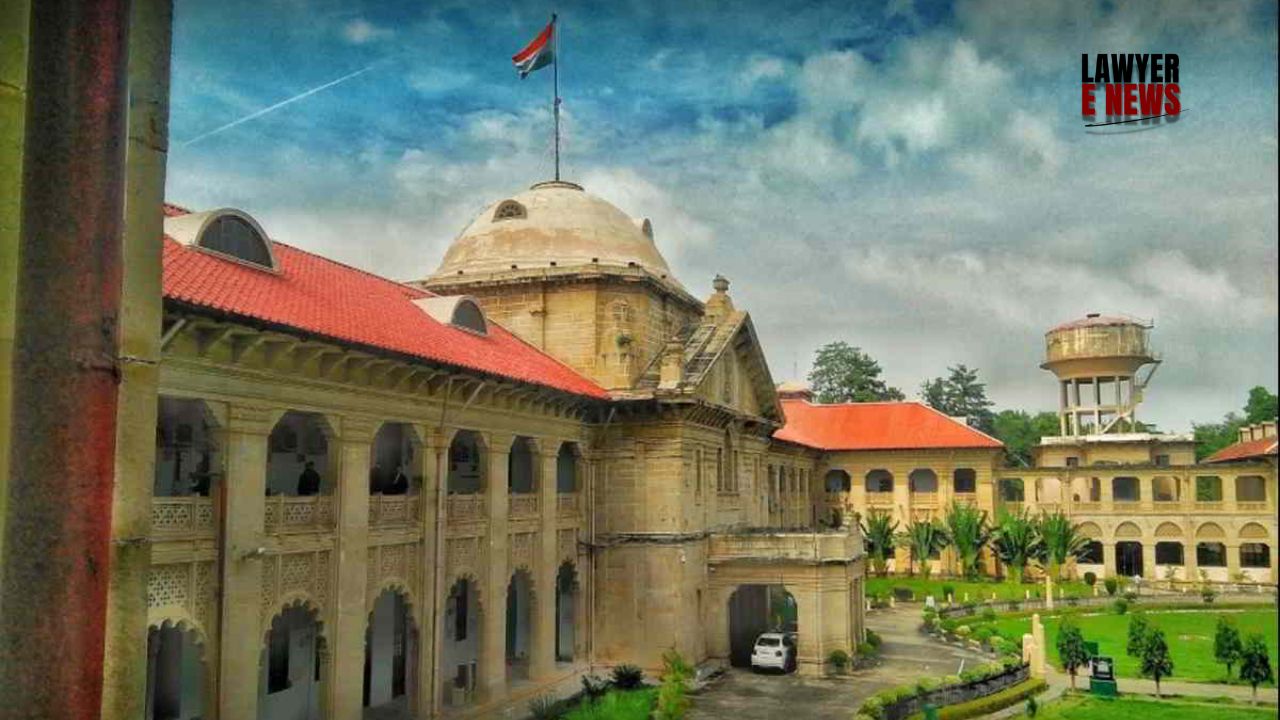-
by Admin
17 December 2025 10:13 AM



“Testimony of Deceased’s Son Supported by Medical and Circumstantial Evidence—Independent Witness Not Seeing Assault Not Fatal to Prosecution Case”, In a significant judgment the Allahabad High Court upheld the conviction of the appellants under Section 304 Part II read with Section 34 of the Indian Penal Code. The Court rejected the plea that the conviction was unsustainable solely because the main eyewitness was related to the deceased, observing that “relatedness alone is no ground to discard trustworthy testimony.”
The Court held that the evidence of the deceased’s son, an eyewitness to the incident, was cogent and consistent, and corroborated by both medical and circumstantial evidence. The presence of an independent witness at the scene immediately after the incident further bolstered the prosecution’s case, though that witness did not see the assault itself.
The case arose out of a fatal assault that occurred on 21 December 1999, when Sonelal, father of the complainant Shyama Kumar, was attacked by the accused—Shiv Narain (now deceased) and his sons Santosh and Vinod—allegedly due to a continuing enmity rooted in a prior altercation and defamatory statements regarding the complainant’s character.
According to the prosecution, the accused assaulted Sonelal with lathis while he was returning home after warming himself near a neighbour’s fire. He sustained a severe head injury, was initially examined at a primary health centre, referred to district and then tertiary hospitals, and eventually died on 24 December 1999. The case, initially registered under Section 308 IPC, was converted to Section 304/34 IPC after his death. The trial court convicted the appellants in May 2004, sentencing them to five years of rigorous imprisonment and a fine of ₹3,000 each.
Credibility of Related Witness – “A close relative who is a natural witness cannot be regarded as an interested witness”
The central argument raised in appeal was that the complainant, P.W.1, being the son of the deceased, was a related and therefore an “interested” witness, whose testimony ought to have been discarded. The Court dismissed this argument emphatically, holding:
“Merely because the witness is related to the deceased, it does not render his testimony unreliable. The law distinguishes between a related witness and an interested witness. A relative is a natural witness. Interest must imply a direct motive to falsely implicate the accused.”
The Court relied on the principles laid down by the Supreme Court in Kartik Malhar v. State of Bihar, (1996) 1 SCC 614, where it was held that:
“A close relative who is a natural witness cannot be regarded as an interested witness. The term ‘interested’ postulates that the witness must have some direct interest in having the accused somehow or the other convicted for some animus or for some other reason.”
The Court also cited Karulal v. State of M.P., (2021) 13 SCC 391, to reinforce that:“The testimony of a related witness, if found to be truthful, can be the basis of conviction.”
In this case, the testimony of P.W.1 was found to be “natural, consistent, and free from contradictions,” and nothing could be extracted during his cross-examination that could shake his version of events.
Independent Witness Not Witnessing Assault – “His presence post-incident supports time and place of occurrence”
The defence had heavily relied on the fact that P.W.4, an independent witness, did not see the assault and therefore the prosecution’s case should fail. The Court found this submission untenable:
“Though P.W.4 did not witness the assault, he reached the place of occurrence immediately upon hearing the cries, and saw the deceased lying injured. This confirms the time and place of incident and corroborates the version of P.W.1.”
The Court held that non-ocular presence of an independent witness is not fatal when the rest of the evidence is cogent and corroborated.
Medical Consistency – “Minor variation in injury description immaterial—Cause of death clearly linked to head trauma”
The medical evidence was also challenged on the ground that P.W.3 (the first doctor) noted a lacerated wound, while P.W.6 (postmortem doctor) described a contusion with blood deposition. The Court dismissed this discrepancy as immaterial:
“The injury was consistent with a blunt force trauma. The lacerated wound noted immediately after the incident and the blue mark with blood found during postmortem both reflect the same underlying injury. This is a matter of timing and not contradiction.”
Motive – “Enmity due to past altercation and defamatory remarks established”
The Court accepted the prosecution’s version that the motive arose from a prior altercation and defamatory statements made by Shiv Narain regarding the complainant's character during marriage negotiations. The judgment records:
“Motive was natural and clearly established. The past hostility, coupled with the derogatory remarks, explain the reason for the attack.”
Delay in Lodging FIR – “FIR was prompt and reasonable under the circumstances”
The FIR was lodged around 00:15 a.m. on 22 December 1999, just a few hours after the incident. The Court found the delay justified:
“The FIR was lodged immediately after the injured was taken to the police station. The timeline of medical examination, referral, and police action supports the version of a prompt report.”
The Court also reiterated the settled law from Amish Devgan v. Union of India, (2021) 1 SCC 1:
“The FIR is not meant to be an encyclopedia. It need not contain every detail of the incident. What is material is promptitude and consistency.”
Dismissing the appeal, the High Court concluded:
“The conviction and the punishment awarded is commensurate to the charge, which has been proved by cogent evidence. The findings recorded by the learned trial court do not suffer from any illegality, error or perversity, which may call for any interference by this Court.”
The Court reaffirmed that a truthful related witness can be the basis of conviction, and technical arguments such as absence of an eyewitness or minor inconsistencies in medical reports cannot override credible and consistent prosecution evidence.
Date of Decision: 28 May 2025
